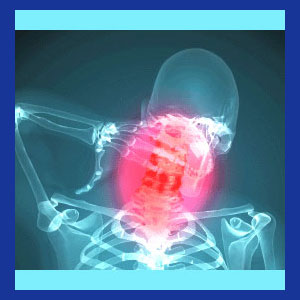
Cervical spine degeneration is commonly blamed for causing neck pain and a host of related problems. Is degeneration really as bad as some doctors make it sound or is the entire process really quite normal, universal and expected? Well, in our extensive experience, the truth lies somewhere in between…
Spinal degeneration occurs in your backbone continuously and is really set in motion past middle age. Virtually all adults demonstrate marked degeneration in the neck and lower back regions by the age of 30 and these changes become more noticeable with the passage of time. Is structural degeneration the source of pain?
This post discusses the occurrence of structural deterioration of the cervical spinal region. We will provide objective guidance for people whose pain has been blamed on spinal degeneration to help you make better treatment choices.
Cervical Spine Degeneration Facts
The neck region will degenerate, often beginning very early in life. Everyone will demonstrate noticeable deterioration of the cervical spine by middle age. Most people will demonstrate some deterioration by the age of 30. Some people (most notably athletes like gymnasts, martial artists and some others) will demonstrate cervical spinal degeneration even younger and possibly even in their teens.
What is spinal degeneration? The process describes a breakdown and degradation of particular structures in the neck, including all of the following individual processes:
Disc desiccation affects the intervertebral discs and causes the structures to thin out, losing water and therefore height. The condition is often diagnosed by clueless care providers a degenerative disc disease, but it is certainly not a disease. Bulging and herniated discs often result once desiccation occurs. Most intervertebral disc issues are asymptomatic, regardless of whether they involve degeneration, bulging or both.
Spinal osteoarthritis is a normal condition that is rarely seriously symptomatic. The condition involves the breakdown of the protective measures in the spinal structures, including the loss of synovial fluid in joints and the growth of bony outcrops called spurs or osteophytes.
Facet joint changes are commonly seen due to both disc desiccation and osteoarthritis. Some doctors will diagnose facet joint syndrome based on imaging studies, but in most cases, facet joint deterioration is a nonissue.
Is Spinal Degeneration Pathological?
Spinal degeneration is normal, especially in the neck, where it is universal. Degeneration is also expected. However, can it be painful or is it even inherently painful? Yes and no, literally…
Spinal degeneration can be pathological in rare instances. Most degeneration is not painful, nor will it cause disability. The body is wonderfully adaptable and can adjust to age-related changes in most cases with minimal symptoms. Some degeneration may cause transient symptoms of a mild to moderate nature, but typically does not require active treatment.
In extreme cases, spinal degeneration can become very pain and problematic. Mechanical dysfunction of the spine or even spinal instability may occur. Disability may the end result of extreme deterioration of the spinal structures. However, all of these fates are rare and represent the except to the rule, rather than the rule itself.
Ironically, this truth is the exact opposite of how degeneration is treated in the modern medical system, where even the most innocent conditions are vilified in order to make money. Not only are most of these diagnoses baseless and incorrect, but they are also responsible for the epidemic rate of treatment failure. Remember, if therapy is targeting a mistaken diagnosis, it is logical to assume that it will fail and it does…
Cervical Spine Degeneration Guidance
We strongly suggest seeking objective care from an enlightened doctor. If any symptoms have been blamed on what amounts to normal spinal degeneration, be absolutely sure to seek a second and even third opinion before agreeing to any type of neck pain treatment. Most people will demonstrate identical levels of spinal degeneration in the neck, so you can be rest assured that just because you see “evidence” on some imaging report does not mean that the report is correctly identifying the source of your pain. Basically, never make assumptions…
As an example, I have 12 herniated discs in my back, including all of them in my neck. These are not the cause of any pain, despite being there for decades. When I see imaging reports of minor disc degeneration and bulging at one level in a patient’s neck with absolutely no indication of pathology present, I can’t help but cringe when they tell me that their doctor has blamed their neck pain on a disc issue… Be careful and learn the facts for yourself.





